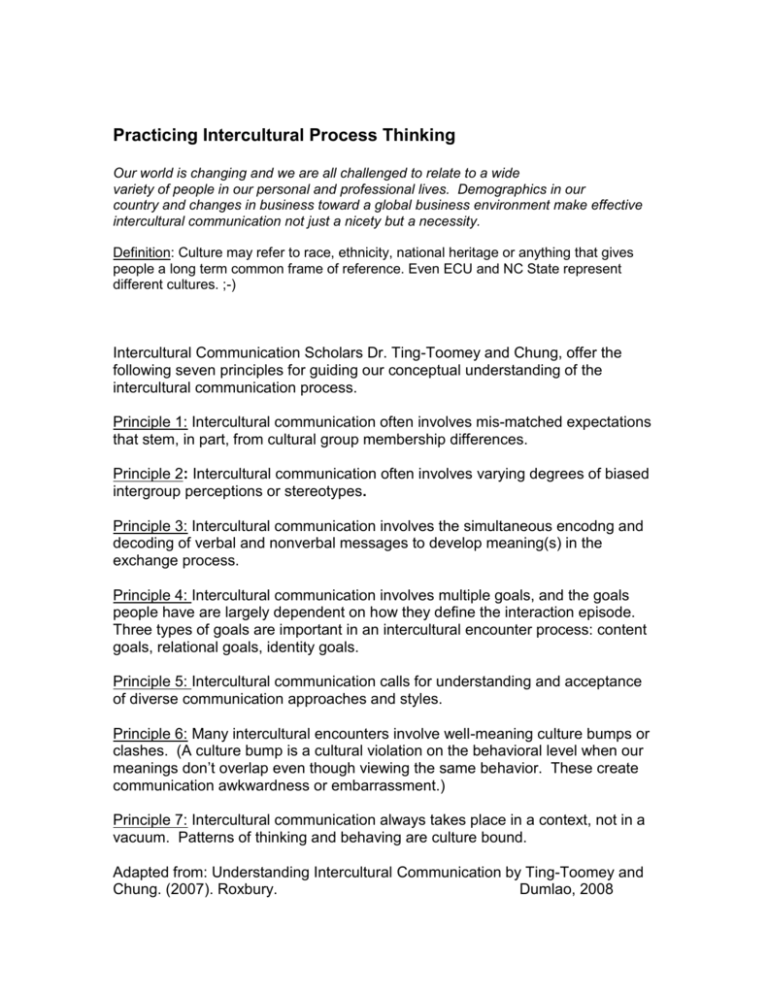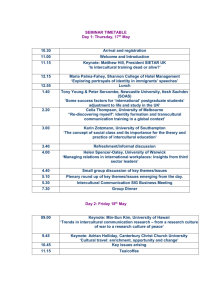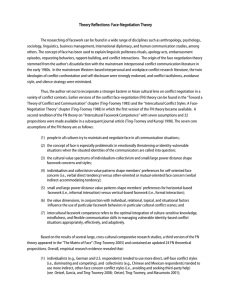Practicing Intercultural Process Thinking
advertisement

Practicing Intercultural Process Thinking Our world is changing and we are all challenged to relate to a wide variety of people in our personal and professional lives. Demographics in our country and changes in business toward a global business environment make effective intercultural communication not just a nicety but a necessity. Definition: Culture may refer to race, ethnicity, national heritage or anything that gives people a long term common frame of reference. Even ECU and NC State represent different cultures. ;-) Intercultural Communication Scholars Dr. Ting-Toomey and Chung, offer the following seven principles for guiding our conceptual understanding of the intercultural communication process. Principle 1: Intercultural communication often involves mis-matched expectations that stem, in part, from cultural group membership differences. Principle 2: Intercultural communication often involves varying degrees of biased intergroup perceptions or stereotypes. Principle 3: Intercultural communication involves the simultaneous encodng and decoding of verbal and nonverbal messages to develop meaning(s) in the exchange process. Principle 4: Intercultural communication involves multiple goals, and the goals people have are largely dependent on how they define the interaction episode. Three types of goals are important in an intercultural encounter process: content goals, relational goals, identity goals. Principle 5: Intercultural communication calls for understanding and acceptance of diverse communication approaches and styles. Principle 6: Many intercultural encounters involve well-meaning culture bumps or clashes. (A culture bump is a cultural violation on the behavioral level when our meanings don’t overlap even though viewing the same behavior. These create communication awkwardness or embarrassment.) Principle 7: Intercultural communication always takes place in a context, not in a vacuum. Patterns of thinking and behaving are culture bound. Adapted from: Understanding Intercultural Communication by Ting-Toomey and Chung. (2007). Roxbury. Dumlao, 2008








